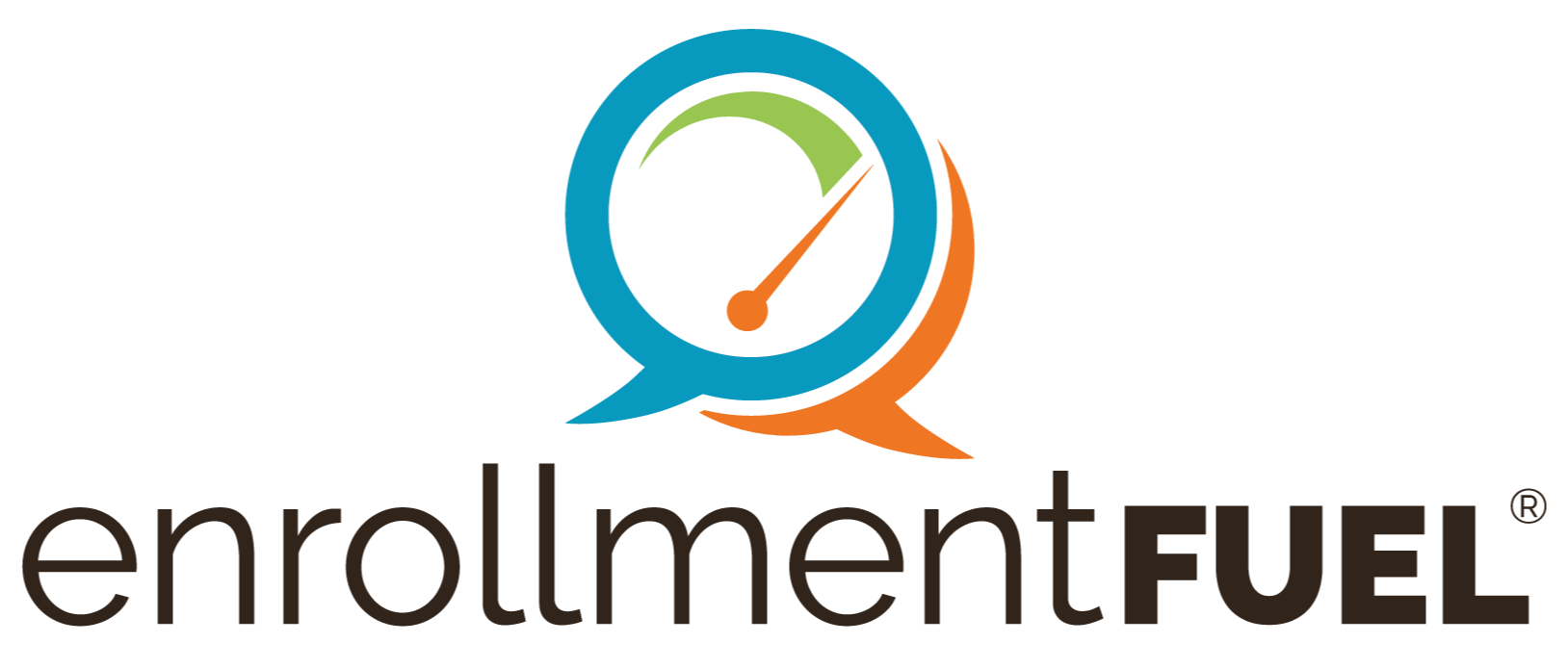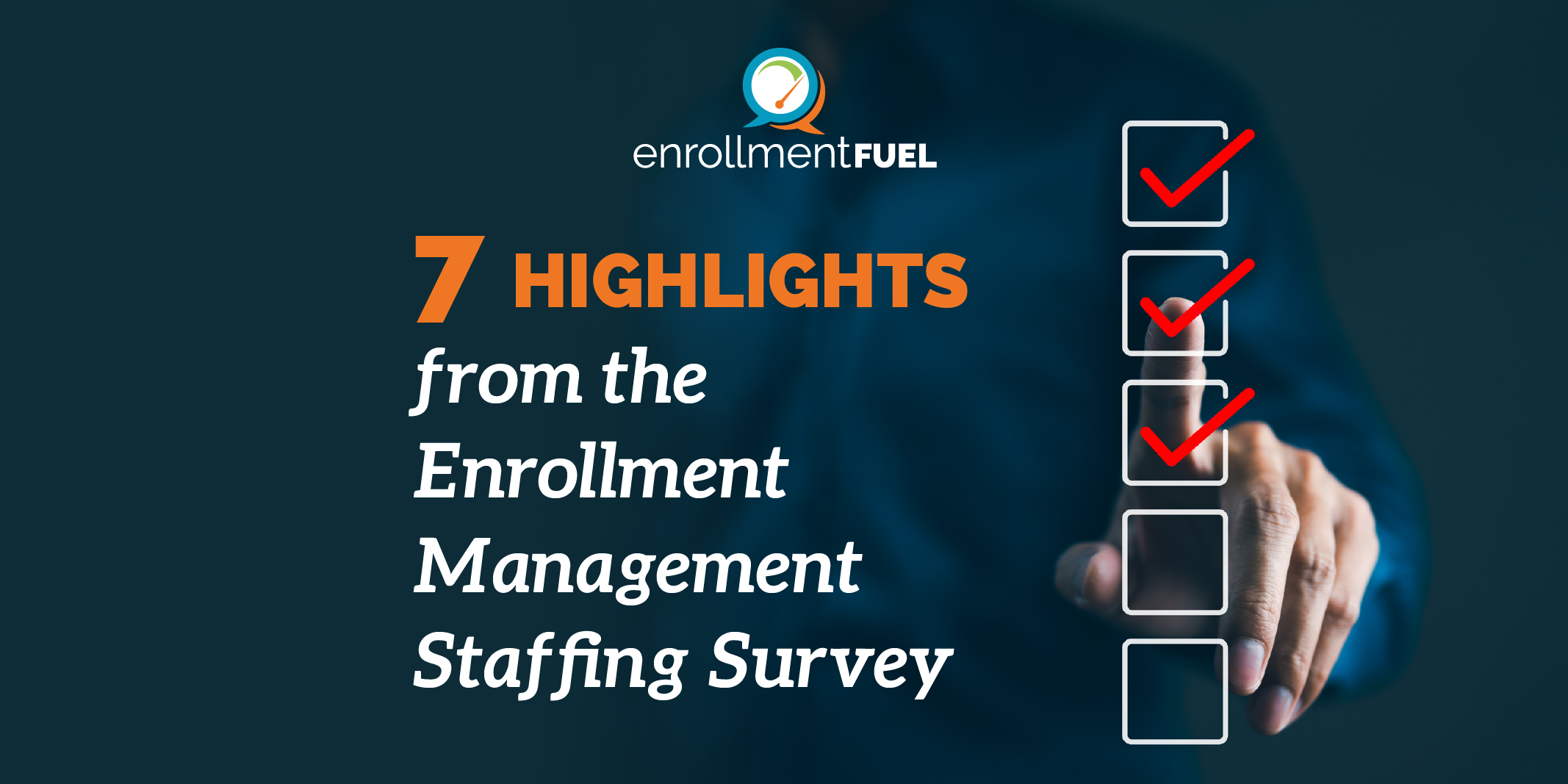The world most college administrators grew up in – where students searched for their college or university with encyclopedic books like the Princeton Review’s Best Colleges Guide – is a bygone era. Prospective students now have online access to a treasure trove of information about thousands of colleges.
The Eduventures 2019 Student Sentiment Research Report proves the importance of the website. Study data showed college websites were the third-highest impact information source for generating awareness about an institution.1 This data underscores what enrollment management professionals already know: your website is a crucially important marketing tool to make prospective students aware of your existence.
The importance of an institution’s website does not diminish as students move through the recruitment funnel. If anything, it heightens. According to the same report, college websites are the second most important information source for students in determining where to apply and attend, followed only by the campus visit.2 The Eduventures report was completed pre-pandemic. With many students deprived of college visits or attending accepted student events, it is fair to state websites now carry an even bigger load for student recruiting.
Optimizing your website for search engines (known as Search Engine Optimization or SEO) is a tremendous opportunity to increase the likelihood that prospective students find you in the first place—and that they find the most relevant webpages during their decision-making journey.
To illustrate this, let us examine STEM University, a fictional institution desiring to recruit more students for its pre-med programs. This case study offers insight into how a lack of SEO investment can negatively impact recruiting and then provides suggestions for improvement.
STEM University:
Mistakes and Opportunities
STEM University, in Springfield, IL, enrolled students in 26 Bachelors programs and has strength in both the health sciences and the natural sciences. Several majors stand out as a particularly strong match for their pre-med students, including biology, chemistry, physics, and public health. STEM University also offers a health sciences major. However, the program does not include many of the advanced hard science coursework expected by medical schools because it is intended as a pre-nursing program or as preparation for careers in allied health professions, requiring a different type of academic preparation than medicine.
STEM University struggled to enroll pre-med students. This was a source of institutional frustration because leadership believed there was strong alignment between the school’s mission and academic offerings and the goals of this large prospective student audience. Growing the number of pre-med students was a key component of the University’s new 5-year plan.
STEM University hired an enrollment consultant to provide recommendations on how to increase pre-med student enrollment. The consultant immediately noticed there is no clearly defined pathway laid out on the website for students who are looking for a pre-med track. Upon digging deeper, the consultant uncovered competition among programs vying to be the premiere pre-med major at the University. The consultant discovered the Provost had previously declared, to reduce competition and possible disharmony, that any of the college’s academic programs can be a pathway toward medical school.
The consultant analyzed the website’s content. There was little mention of essential keywords, such as “medical,” “medical school,” and “pre-med” on the pages, including on the academic program pages, generated by the Provost’s office. When the consultant searched for “Pre-med programs near Springfield” on Google, the first page results included Shelbyville University, a competitor college in a neighboring city, but not STEM University. STEM University didn’t show up for pre-med until the third page of Google results.
When the consultant searched for specific information about the school by typing the phrase “pre-med program at STEM University,” the health sciences program came up as the top result. Since the health sciences program was not a good fit for students searching for a pre-med program, potential students often disqualified STEM University early in the search process.
The consultant concluded that prospective pre-med students were having a hard time finding STEM University and made the following strategic recommendations:
- Create a standalone pre-med webpage so that search engines can find it
- Add words like “pre-med,” “medical,” “medicine,” “medical school,” and “MCAT” to the academic’s homepage as well as to program pages such as biology, physics, chemistry, and public health
- Create defined pre-med tracks for all academic majors, which will be added to both the standalone pre-med page and to academic program pages
- Increase marketing department capacity to monitor website SEO on an ongoing basis
STEM moved forward to implement the recommendations and quickly saw an increase in page traffic and new inquiries who were interested in pre-med.
Recommendations for Improving Your SEO
So how can you go about improving Search Engine Optimization at your institution to support your recruitment strategies? While good SEO requires both skills and an ongoing time investment, enrollment and marketing teams with limited capacity can take proactive steps for a positive, and often immediate, impact.

Start with an audit.
Before you can define your SEO strategy, you need a clear understanding of where you stand. Start by identifying important keywords. Determine where you and your competitors rank. What keywords bring in the most organic traffic? Where do you need to improve? If you discover you must overcome low rankings for crucial keywords, consider using paid Google search ads while you work on seeding keywords into web pages.

Make sure the right keywords are on the right webpages.
STEM University missed opportunities for organic traffic because the search engine algorithms could not find relevant keywords. Know what keywords students use during different stages of search. Map these keywords to appropriate webpages. It is a comprehensive process at the outset, and also something to review and maintain on an ongoing basis because search engine algorithms continuously evolve.

Update your website content frequently.
Search engines use bots to scan websites. Each time you update content on your website, it is an opportunity to be re-indexed by search engines and increase your ranking for relevant keywords. Adding topical content – for example, a blog or a podcast on a pre-med topic – increases the number of keywords on your website.

Include your most important keywords in webpage URLs.
Similar to adding keywords to relevant pages, adding your most important and most relevant keywords in your webpage URLs will make it easier for search engines to find you.

Make the most of metadata.
Website metadata consists of a page title tag and meta description for every page. The title meta tag is the description your website visitors see at the top of their browser tab and as the headline within search engine results. Search engines seek meta tags for keywords, just as they search for keywords within your webpages’ content. Keep meta tags updated and relevant to the respective webpage.
The meta description summarizes what is contained on a webpage, and it is typically shown right below a search engine result. While Google does not currently scan meta descriptions for keywords, a compelling meta description motivates potential students to click-through to your website. Higher click-through rates also positively impact future search engine rankings.

Cross-link your most relevant webpages.
Cross-linking helps search engine algorithms understand the structure of your website and how your webpages are related. Suppose STEM University were to cross-link its biology and pre-med webpages, but not its health sciences and pre-med webpages. In this case, it signals search engines that biology is more related to pre-med than health sciences. Map and review your website structure regularly, including cross-links.
To maximize your website’s value as a marketing tool, producing strong content is a good start, but it is not enough to ensure the world will find you. Robust, intentional SEO helps enrollment management professionals compete by increasing both the quality and the quantity of your website visitors and positions your institution as a well-traveled destination for potential recruits.
Traditional lead pools are shrinking for demographic and behavioral reasons. To maximize the success of Student Search, enrollment management professionals must have a basic understanding of their institution’s approach to SEO and how they compare to competitors. To dip your toes in the water and find out where you stand, consider investing in a competitive analysis. You can simply follow FUEL’s formula. First, compare SEO at your school with three competitors, then look at a variety of factors, such as ranking keywords, ad spend, domain ranking, and authority measures. If you would like to learn more about SEO or take a deeper dive into the FUEL formula, contact a member of our team, and we will be happy to share more information.
Download Article
Related Articles
Retargeting Ramps Up
Enrollment professionals have long been skilled at reengaging students through multiple platforms...
Madison Square Garden, Here We Come: Recruiting Adult & Graduate Students
When it comes to graduate and adult recruitment, there are many moving parts. Unlike the...
Aligning New Board Members to Your Way of Thinking
Even before the upheavals caused by the global pandemic, college and university boards have...






Leave A Comment